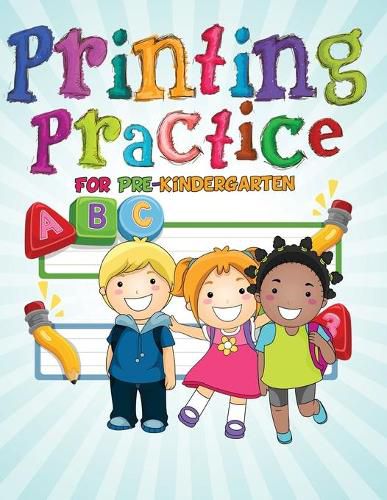Readings Newsletter
Become a Readings Member to make your shopping experience even easier.
Sign in or sign up for free!
You’re not far away from qualifying for FREE standard shipping within Australia
You’ve qualified for FREE standard shipping within Australia
The cart is loading…






This title is printed to order. This book may have been self-published. If so, we cannot guarantee the quality of the content. In the main most books will have gone through the editing process however some may not. We therefore suggest that you be aware of this before ordering this book. If in doubt check either the author or publisher’s details as we are unable to accept any returns unless they are faulty. Please contact us if you have any questions.
Teaching young children to write print is one way of encouraging their literacy levels. Print writing is used as a reliable exercise in developing your child’s handwriting too! Whenever a letter is successfully replicated, it brings about a sense of confidence that will help young children to overcome their nervousness around printing. This is the workbook for print writing that every child needs to own.
Effective early literacy instruction provides preschool children with developmentally appropriate settings, materials, experiences, and social support that encourage early forms of reading and writing to flourish and develop into conventional literacy.
Youngsters need writing to assist them to learn about reading, they also require reading to help them comprehend writing; and they need oral language to aid them in learning about both.
Children must learn foundation concepts and skills of written language from this more complex and expansive understandings and provocations occur, such as understanding of the alphabetic principle, identification of core text structures, sense of category, and an intense yearning to know. They need to learn phonological cognizance, alphabet letter knowledge, the purposes of written language, a sense of defining from texts, vocabulary, rudimentary print knowledge such as developmental spelling, and the determination to explore print as a meaning-making utility.
$9.00 standard shipping within Australia
FREE standard shipping within Australia for orders over $100.00
Express & International shipping calculated at checkout
This title is printed to order. This book may have been self-published. If so, we cannot guarantee the quality of the content. In the main most books will have gone through the editing process however some may not. We therefore suggest that you be aware of this before ordering this book. If in doubt check either the author or publisher’s details as we are unable to accept any returns unless they are faulty. Please contact us if you have any questions.
Teaching young children to write print is one way of encouraging their literacy levels. Print writing is used as a reliable exercise in developing your child’s handwriting too! Whenever a letter is successfully replicated, it brings about a sense of confidence that will help young children to overcome their nervousness around printing. This is the workbook for print writing that every child needs to own.
Effective early literacy instruction provides preschool children with developmentally appropriate settings, materials, experiences, and social support that encourage early forms of reading and writing to flourish and develop into conventional literacy.
Youngsters need writing to assist them to learn about reading, they also require reading to help them comprehend writing; and they need oral language to aid them in learning about both.
Children must learn foundation concepts and skills of written language from this more complex and expansive understandings and provocations occur, such as understanding of the alphabetic principle, identification of core text structures, sense of category, and an intense yearning to know. They need to learn phonological cognizance, alphabet letter knowledge, the purposes of written language, a sense of defining from texts, vocabulary, rudimentary print knowledge such as developmental spelling, and the determination to explore print as a meaning-making utility.